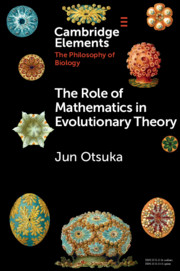Element contents
The Role of Mathematics in Evolutionary Theory
Published online by Cambridge University Press: 05 February 2020
Summary
Information
- Type
- Element
- Information
- Online ISBN: 9781108672115Publisher: Cambridge University PressPrint publication: 17 October 2019
References
Accessibility standard: Unknown
Why this information is here
This section outlines the accessibility features of this content - including support for screen readers, full keyboard navigation and high-contrast display options. This may not be relevant for you.Accessibility Information
- 22
- Cited by
